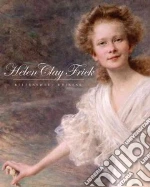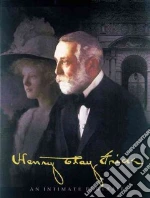 Libri di Frick Symington Sanger Martha su Unilibro.it
)
Libri di Frick Symington Sanger Martha su Unilibro.it
)
|
|
2024 |
 Title :
The Henry Clay Frick house
Title :
The Henry Clay Frick houseAuthor: Frick Symington Sanger Martha Publisher: Phaidon € 74,95
Scontato: € 71,20
|
|
|
1916 |
 Title :
Maryland Blood
Title :
Maryland BloodAuthor: Sanger Martha Frick Symington Publisher: Maryland Historical Society € 70,10
|
|
|
2007 |
 Title :
Helen Clay Frick
Title :
Helen Clay FrickAuthor: Sanger Martha Frick Symington Publisher: Univ of Pittsburgh Pr In 1919, at the age of thirty-one, Helen Clay Frick inherited $38 million, becoming the richest single woman in America. These riches, however, came at a price. Helen's tumultuous early life was shaped by her father's infamy as a union strikebreaker and the ensuing attempt on his life, her mother's debilitating depression, and the death of her older sister and newborn brother about a year apart. Despite these events, Helen built a luminous legacy through her lifelong commitment to social welfare, the environment, and a supreme devotion to the visual arts. Helen's philanthropy touched the lives of thousands. Her contributions included a vacation home for young female textile workers, two wildlife preserves, one a public wilderness park, a Victorian-era house museum, a pre-Civil War historic Mennonite village, a university fine arts department, two art history libraries, and the purchase of many significant works of art for her private collection, the Frick Collection in New York, the University of Pittsburgh teaching collection, and the Frick Art Museum. Through extensive period research and singular access to Frick family archives and Helen Clay Frick's personal writings, Martha Frick Symington Sanger fashions a multifaceted portrait of a complex, often misunderstood, yet indomitable humanitarian, philanthropist, and cultural force in twentieth-century America. € 70,00
|
|
|
1998 |
 Title :
Henry Clay Frick
Title :
Henry Clay FrickAuthor: Sanger Martha Frick Symington Publisher: Abbeville Pr Frick, notorious during the 19th century for his persecution of labor and his role in the Johnstown flood tragedy, also assembled an extensive and well-respected personal art collection. Here, his great-granddaughter reconciles these two aspects of his personality by examining how events in his public and personal lives influenced the selection of art in his collection. Includes almost 400 illustrations, many of which are color reproductions of the renowned paintings in the Frick Collection, from Manet's The Bullfight to Grandma Moses' Westmoreland Farm. Annotation c. by Book News, Inc., Portland, Or. € 44,60
|